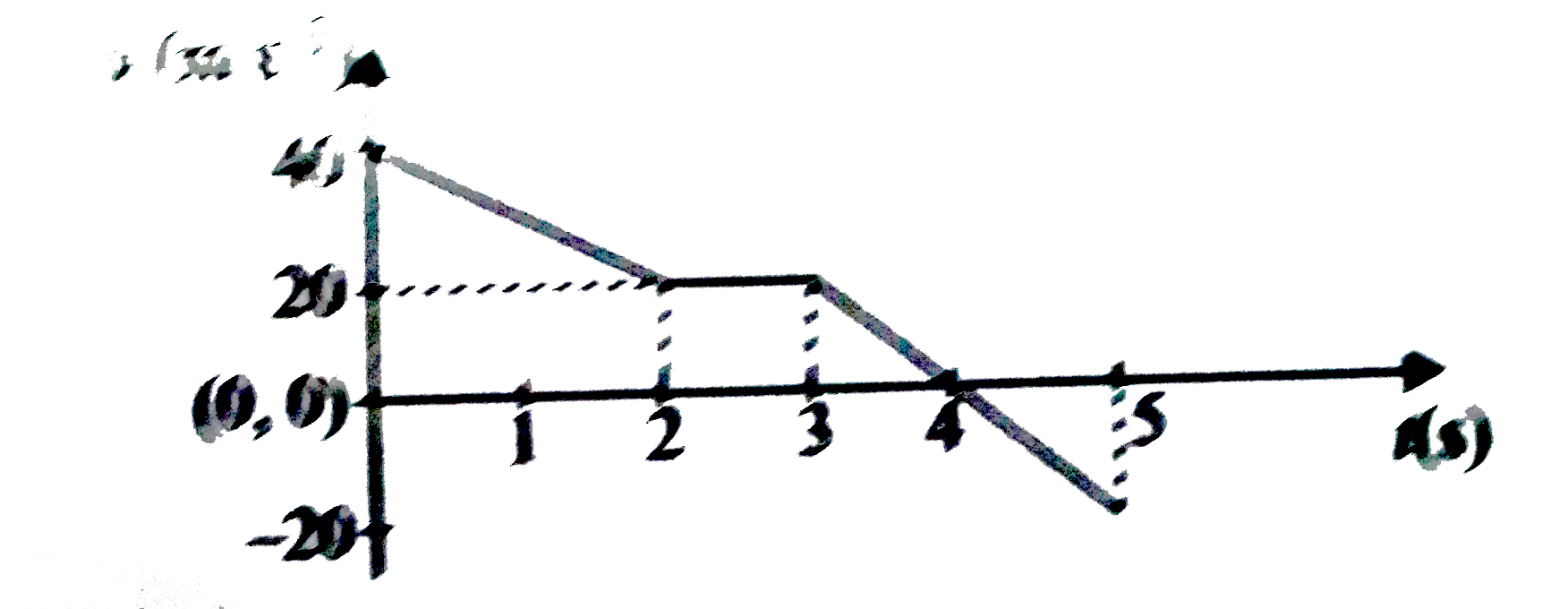A body is thrown vertically upwards with initial velocity 'u' reaches maximum height in 6 seconds. The ratio of distances travelled by the body in the first second and seventh second is
1:1
11:1
1:2
1:11
The correct Answer is:B
To solve the problem step by step, we need to find the ratio of distances traveled by a body thrown vertically upwards in the first second and the seventh second. Here's how we can approach it:
Step 1: Determine the initial velocity (u)
The body reaches its maximum height in 6 seconds. At maximum height, the final velocity (v) is 0. We can use the equation of motion:
v=u+at
Where:
- v=0 (at maximum height)
- a=−g=−10m/s2 (acceleration due to gravity)
- t=6s
Substituting the values into the equation:
0=u−10×6
u=60m/s
Step 2: Calculate the distance traveled in the first second (s1)
The formula for the distance traveled in the nth second is:
sn=u+a2(2n−1)
For the first second (n = 1):
s1=u+a2(2×1−1)
Substituting the values:
s1=60+−102(1)
s1=60−5=55m
Step 3: Calculate the distance traveled in the seventh second (s7)
Using the same formula for n = 7:
s7=u+a2(2×7−1)
Substituting the values:
s7=60+−102(13)
s7=60−65=−5m
Step 4: Calculate the ratio of distances
Now we can find the ratio of distances traveled in the first second to the seventh second:
Ratio=s1s7=55−5=−11
Since we are interested in the magnitude of the ratio:
Ratio=11:1
Final Answer
The ratio of distances traveled by the body in the first second and the seventh second is:
Ratio=11:1
---
The body reaches its maximum height in 6 seconds. At maximum height, the final velocity (v) is 0. We can use the equation of motion:
v=u+at
Where:
- v=0 (at maximum height)
- a=−g=−10m/s2 (acceleration due to gravity)
- t=6s
0=u−10×6
u=60m/s
The formula for the distance traveled in the nth second is:
sn=u+a2(2n−1)
For the first second (n = 1):
s1=u+a2(2×1−1)
Substituting the values:
s1=60+−102(1)
s1=60−5=55m
Using the same formula for n = 7:
s7=u+a2(2×7−1)
Substituting the values:
s7=60+−102(13)
s7=60−65=−5m
Now we can find the ratio of distances traveled in the first second to the seventh second:
Ratio=s1s7=55−5=−11
Ratio=11:1
The ratio of distances traveled by the body in the first second and the seventh second is:
Ratio=11:1
Topper's Solved these Questions
- MOTION IN A STRAIGHT LINE BOOK - AAKASH SERIESCHAPTER - MOTION IN A STRAIGHT LINE EXERCISE - problems
47 Videos
- MOTION IN A STRAIGHT LINE BOOK - AAKASH SERIESCHAPTER - MOTION IN A STRAIGHT LINE EXERCISE - Numerical exercise(LEVEL-1)
22 Videos
- MOTION IN A STRAIGHT LINE BOOK - AAKASH SERIESCHAPTER - MOTION IN A STRAIGHT LINE EXERCISE - EXERCISE -II
80 Videos
- MOTION IN A PLANEBOOK - AAKASH SERIESCHAPTER - MOTION IN A PLANEEXERCISE - QUESTION FOR DESCRIPTIVE ANSWER
7 Videos
- MOVING CHARGES AND MAGNETISMBOOK - AAKASH SERIESCHAPTER - MOVING CHARGES AND MAGNETISMEXERCISE - EXERCISE-III
49 Videos
Similar Questions
Knowledge Check
In the given v-t graph the distance travelled by the body in 5 seconds will be
 A100 mB80 mC40 mD20 m
A100 mB80 mC40 mD20 mA particle is projected vertically upwards and it reaches the maximum height H in time T seconds. The height of the particle at any time t will be-
Ag(t−T)2BH−12g(t−T)2C12g(t−T)2DH−g(t−T)2
A body thrown vertically up with velocity u reaches the maximum height h after T seconds. Which of the following statements is true ?
View SolutionA body is thrown vertically upward with velocity u, the greatest height h to which it will rise is,
View SolutionA body is thrown vertically upwards and takes 5 seconds to reach maximum height. The distance travelled by the body will be same in :-
View SolutionA ball falls freely from rest. The ratio of the distance travelled in first, second, third and fourth second is
View SolutionTwo bodies are thrown vertically upwards with their initial velocity in the ratio 2:3. Then the ratio of the maximum height attained by them is
View SolutionA body A is thrown vertically upwards with such a velocity that it reaches a maximum height of h. Simultaneously, another body B is dropped from height h. It strikes the ground and does not rebound. The velocity of A relative to B versus time graph is best represented by (upward direction is positive).
View Solution
